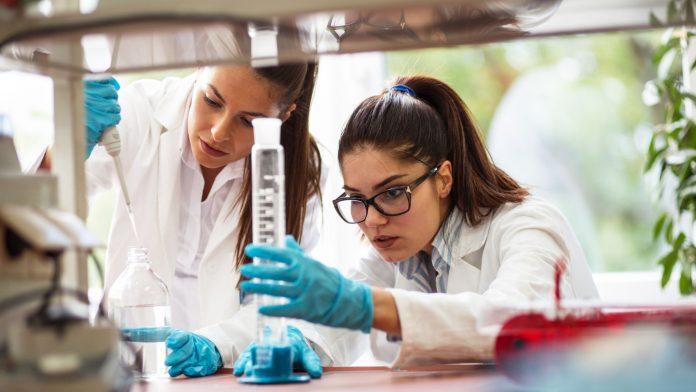The heart is an intricate and vital organ that beats ceaselessly, ensuring the flow of life-giving blood throughout the body. When it comes to diagnosing and treating cardiovascular conditions, medical professionals rely on a specialized facility known as the Cardiac Catheterization Laboratory, or Cath Lab for short. In this article, we’ll delve into the fascinating world of the Cath Lab, uncovering its significance, procedures, and the role it plays in maintaining heart health.
Table of Contents
- Introduction
- What is a Cath Lab?
- The Importance of Cath Labs in Modern Medicine
- Equipment and Technology
- Common Cath Lab Procedures
- Coronary Angiography
- Angioplasty and Stent Placement
- Cardiac Electrophysiology Studies
- The Cath Lab Team: Collaborative Care
- Safety Measures and Protocols
- Patient Experience in the Cath Lab
- Advancements in Cath Lab Techniques
- Addressing Misconceptions about Cath Labs
- Benefits and Risks of Cath Lab Procedures
- Recovery and Aftercare
- Future of Cath Labs: Innovations and Possibilities
- Conclusion
- Frequently Asked Questions (FAQs)
1. Introduction
The Cardiac Catheterization Laboratory, often referred to as the Cath Lab, is a specialized facility within hospitals that focuses on diagnosing and treating cardiovascular conditions through minimally invasive procedures.
2. What is a Cath Lab?
A Cath Lab is a high-tech medical suite equipped with advanced imaging and monitoring technology. It is specifically designed to perform a range of diagnostic and interventional procedures on the heart and blood vessels.
3. The Importance of Cath Labs in Modern Medicine
Cath Labs have revolutionized the field of cardiology by enabling doctors to visualize the inner workings of the heart in real-time. This ability to diagnose and treat conditions without the need for invasive surgery has significantly improved patient outcomes.
4. Equipment and Technology
Cath Labs are equipped with state-of-the-art technology, including fluoroscopy machines, ultrasound systems, and hemodynamic monitoring devices. These tools allow cardiologists to perform procedures with precision and accuracy.
5. Common Cath Lab Procedures
Coronary Angiography
Coronary angiography is a procedure that involves injecting a contrast dye into the coronary arteries to identify blockages or narrowings.
Angioplasty and Stent Placement
Angioplasty is a procedure used to widen narrowed or blocked arteries. It is often followed by the placement of a stent to keep the artery open.
Cardiac Electrophysiology Studies
Electrophysiology studies help diagnose and treat abnormal heart rhythms by mapping the heart’s electrical activity.
6. The Cath Lab Team: Collaborative Care
A Cath Lab procedure involves a multidisciplinary team, including cardiologists, nurses, radiologic technologists, and support staff. Their collaborative efforts ensure a successful and safe procedure.
7. Safety Measures and Protocols
Safety is paramount in the Cath Lab. Strict protocols are followed to minimize radiation exposure and prevent infections, ensuring the well-being of both patients and medical personnel.
8. Patient Experience in the Cath Lab
Patients in the Cath Lab are provided with personalized care. The procedures are minimally invasive, leading to shorter recovery times and less discomfort compared to traditional surgeries.
9. Advancements in Cath Lab Techniques
Technological advancements continue to enhance Cath Lab procedures. From robotic-assisted interventions to three-dimensional imaging, these innovations are shaping the future of cardiovascular care.
10. Addressing Misconceptions about Cath Labs
There are common misconceptions about Cath Lab procedures, such as assuming they are only for severe cases. In reality, Cath Labs cater to a wide range of cardiovascular conditions.
11. Benefits and Risks of Cath Lab Procedures
While Cath Lab procedures offer numerous benefits, including shorter hospital stays and quicker recovery, they also carry some risks. Cardiologists carefully assess each patient’s case to minimize potential complications.
12. Recovery and Aftercare
Recovery after a Cath Lab procedure is relatively swift. Patients receive post-procedure instructions and follow-up appointments to ensure their heart health is on track.
13. Future of Cath Labs: Innovations and Possibilities
The future holds exciting possibilities for Cath Labs. With ongoing research, we can anticipate even more advanced techniques and personalized treatments for various heart conditions.
14. Conclusion
In the realm of cardiovascular care, Cath Labs play a pivotal role in diagnosing and treating heart conditions. Their blend of cutting-edge technology and skilled medical professionals ensures that patients receive the best possible care with minimal invasiveness.
15. Frequently Asked Questions (FAQs)
Q1: What is the primary function of a Cath Lab? A: The primary function of a Cath Lab is to diagnose and treat cardiovascular conditions using minimally invasive procedures.
Q2: Are Cath Lab procedures risky? A: While Cath Lab procedures have risks, they are generally considered safe due to rigorous safety measures and the expertise of the medical team.
Q3: Is Cath Lab treatment suitable for all heart conditions? A: Cath Lab procedures are suitable for a wide range of heart conditions, from diagnostic imaging to complex interventions.
Q4: How long does a typical Cath Lab procedure take? A: The duration of a Cath Lab procedure varies depending on the type of procedure being performed but generally ranges from 30 minutes to a few hours.
Q5: How can I learn more about Cath Lab procedures at our hospital? A: To learn more about Cath Lab procedures offered at our hospital, please visit
